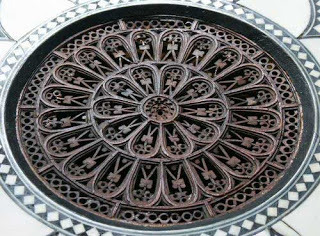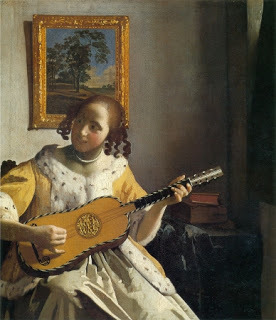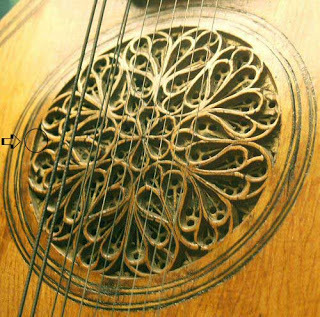Tiny cathedral windows that sing
 Up until the 17th century there were no real guitars - the only instruments similar to a guitar were the lute and, in Spain, where my new work in progress is set, the vilhuela.
Up until the 17th century there were no real guitars - the only instruments similar to a guitar were the lute and, in Spain, where my new work in progress is set, the vilhuela. In the early 17th century the Guitarra Morrisco became popular in Spain in the Moorish areas where what we know now as flamenco guitar and dance began. This type of guitar spread to other European countries where it became known as the Baroque Guitar or sometimes simply the Spanish Guitar.
In the early 17th century the Guitarra Morrisco became popular in Spain in the Moorish areas where what we know now as flamenco guitar and dance began. This type of guitar spread to other European countries where it became known as the Baroque Guitar or sometimes simply the Spanish Guitar. A good example of this sort of Baroque guitar can be seen in Vermeer's painting "The Guitar Player."
Also evident here is the inlaid decorative edge and "rose" or fretwork, which was a feature of this period in many instruments. In the 17th century there were specific craftsmen who made a living carving this sort of decorative panel. They are so beautiful and intricate.
They are crafted from of wood, or for the more detailed ones, parchment, cut in ornamental layers to give a three dimensional effect.
You can click on the picture below to see more examples. I am almost tempted to invent a "rose" carver just so that I can feature a description of someone making one of these, but unfortunately I already have quite a few craftsmen populating my novel already!
 The designs are similar to those of "rose" windows such as in the great cathedrals, but in miniature.
The designs are similar to those of "rose" windows such as in the great cathedrals, but in miniature.As it is, the Spanish guitarist is a "bit-player" in my cast of characters - nevertheless, I think the look and feel of the guitar is important to the book, and I love this sort of research.
Published on April 07, 2011 07:46
No comments have been added yet.



